Martineau Harriet
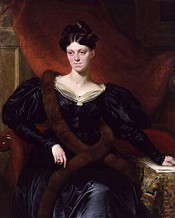
Harriet Martineau (June 12, 1802 – June 27, 1876) was an English writer and philosopher, renowned in her day as a controversial journalist, political economist, abolitionist and life-long feminist. Martineau has also been called the first female sociologist and the first female journalist in England. The sixth of eight children, Harriet Martineau was born in Norwich, England, where her father was a manufacturer. The family was of Huguenot extraction and professed Unitarian views. Her brother, James Martineau, was a clergyman of some note in the tradition of the English Dissenters. The atmosphere of her home was industrious, intellectual and austere; she herself was clever, but weakly and unhappy; she had no sense of taste or smell, and moreover grew deaf while young, having to use an ear trumpet. At the age of sixteen the state of her health and nerves led to a prolonged visit to her father's sister, Mrs Kentish, who kept a school at Bristol. Here, in the companionship of amiable and talented people, her life became happier. Here, also, she fell under the influence of the Unitarian minister, Dr Lant Carpenter, from whose instructions, she says, she derived "an abominable spiritual rigidity and a truly respectable force of conscience strangely mingled together." From 1819 to 1830 she again resided chiefly at Norwich. About her twentieth year her deafness became confirmed. In 1821 she began to write anonymously for the Monthly Repository, a Unitarian periodical, and in 1823 she published Devotional Exercises and Addresses, Prayers and Hymns. In 1826 her father died, leaving a bare maintenance to his wife and daughters. His death had been preceded by that of his eldest son, and was shortly followed by that of a man to whom Harriet was engaged. Mrs Martineau and her daughters soon after lost all their means by the failure of the house where their money was placed. Harriet had to earn her living, and, being precluded by deafness from teaching, took up authorship in earnest. Besides reviewing for the Repository she wrote stories (afterwards collected as Traditions of Palestine), gained in one year (1830) three essay prizes of the Unitarian Association, and eked out her income by needlework. In 1831 she was seeking a publisher for a series of tales designed as Illustrations of Political Economy. After many failures she accepted disadvantageous terms from Charles Fox, to whom she was introduced by his brother, the editor of the Repository. The sale of the first of the series was immediate and enormous, the demand increased with each new number, and from that time her literary success was secured. In 1832 she moved to London, where she numbered among her acquaintances Henry Hallam, Harriet Taylor, Alexander Maconochie, Henry Hart Milman, Thomas Malthus, Monckton Milnes, Sydney Smith, John Stuart Mill, George Eliot, Edward George Bulwer-Lytton, Elizabeth Barrett Browning and later Thomas Carlyle. Florence Nightingale and Charlotte Brontë also became her friends. Until 1834 she continued to be occupied with her political economy series and with a supplemental series of Illustrations of Taxation. Four stories supporting the Whig Poor Law reforms came out about the same time. These tales, direct, lucid, written without any appearance of effort, and yet practically effective, display the characteristics of their author's style. Tory paternalists reacted by calling her a Malthusian "who deprecates charity and provision for the poor", while Radicals were equally opposed to her. She was fêted by Whig high society. In May 1834 Charles Darwin got a letter from his sisters telling him that Martineau was "a great Lion in London" and recommending Poor Laws and Paupers Illustrated in pamphlet sized parts. They added that their brother "Erasmus knows her & is a very great admirer & every body reads her little books & if you have a dull hour you can, and then throw them overboard, that they may not take up your precious room." In 1834, when the series was complete, Harriet Martineau paid a long visit to the United States. Here her open adhesion to the Abolitionist party, then small and very unpopular, gave great offence, which was deepened by the publication, soon after her return, of Theory and Practice of Society in America (1837) and a Retrospect of Western Travel (1838). An article in the Westminster Review, "The Martyr Age of the United States", introduced English readers to the struggles of the Abolitionists. After the Voyage of the Beagle Charles went in October 1836 to stay with his brother Erasmus Alvey Darwin in London, and found Erasmus spending his days "driving out Miss Martineau". The Darwins shared her Unitarian background and Whig politics, but their father Robert was concerned that as a potential daughter-in-law, her politics were too extreme. He was upset by a piece he read in the Westminster Review calling for the radicals to break with the Whigs and give working men the vote "before he knew it was not hers, and wasted a good deal of indignation, and even now can hardly believe it is not hers." Charles Darwin called on Martineau and remarked that "she was very agreeable, and managed to talk on a most wonderful number of subjects, considering the limited time", which included the social and natural worlds she was then writing about in her book Society in America, including the "grandeur and beauty" of the "process of world making" she had seen at Niagara Falls. He added that "I was astonished to find how ugly she is" and "she is overwhelmed with her own projects, her own thoughts and abilities", though "Erasmus palliated all this, by maintaining one ought not to look at her as a woman." For her part, Martineau described Darwin as "simple, childlike, painstaking, effective". After a later meeting when he was struggling with his own writing and she was starting Deerbrook he expressed astonishment at the ease with which she wrote such fluent prose, and "never has occasion to correct a single word she writes", though she was "not a complete Amazonian, & knows the feeling of exhaustion from thinking too much." The American books were followed by a three volume novel, Deerbrook (1839)–a story of middle class country life with a surgeon hero. To the same period belong a few little handbooks, forming parts of a Guide to Service. The veracity of her Maid of All Work led to a widespread belief, which she regarded with some complacency, that she had once been a maid of all work herself. In 1839, during a visit to Continental Europe, Harriet Martineau's health broke down. Her chronic ill-health was due to an ovarian cyst, and she visited her brother-in-law, the celebrated Newcastle upon Tyne doctor Thomas Michael Greenhow on several occasions to try to alleviate her symptoms - on the last occasion staying for six months in the family house at 28 Eldon Square. She then moved down-river to Tynemouth, where she stayed at Mrs Halliday's boarding -house, 57 Front Street for nearly five years from 16 March 1840. A plaque marks the house where she produced at least three books, including a novel about the Haitian slave leader Toussaint L'Ouverture, and Life in the Sick-Room, describing her life in Tynemouth. She also devotes some hundred pages of her autobiography to this period. Notable visitors included Richard Cobden and Thomas Carlyle and his wife. Harriet had expected to remain an invalid for the rest of her life and delighted in the freedom her telescope allowed. Across the Tyne was the sandy beach 'where there are frequent wrecks - too interesting to an invalid... and above the rocks, a spreading heath, where I watch troops of boys flying their kites; lovers and friends taking their breezy walks on Sundays...' She also gives a lyrical picture of Tynemouth: When I look forth in the morning, the whole land may be sheeted with glistening snow, while the myrtle-green sea tumbles... there is none of the deadness of winter in the landscape; no leafless trees, no locking up with ice; and the air comes in through my open upper sash, but sun-warmed. The robins twitter and hop in my flower-boxes... and at night, what a heaven! What an expanse of stars above, appearing more steadfast, the more the Northern Lights dart and quiver!' The busybody Mrs Jellyby in Bleak House is probably based on Harriet Martineau, who nevertheless retained her high regard for Charles Dickens. During her illness she for a second time declined a pension on the civil list, fearing to compromise her political independence. Her letter on the subject was published, and some of her friends raised a small annuity for her soon after. In 1844 Harriet Martineau underwent a course of mesmerism, and in a few months was restored to health. She eventually published an account of her case, which had caused much discussion, in sixteen Letters on Mesmerism. This led to friction with 'the natural prejudices of a surgeon and a surgeon's wife' and in 1845 she left Tynemouth for Ambleside in the Lake District, where she built herself "The Knoll", the house in which the greater part of her later life was spent. In 1845 she published three volumes of Forest and Game Law Tales. In 1846 she made a tour with some friends in Egypt, Palestine and Syria, and on her return published Eastern Life, Present and Past (1848). This travelogue showed that as humanity passed through one after another of the world's historic religions, the conception of the Deity and of Divine government became at each step more and more abstract and indefinite. The ultimate goal Harriet Martineau believed to be philosophic atheism, but this belief she did not expressly declare. It described ancient tombs, "the black pall of oblivion" set against the paschal "puppet show" in the Church of the Holy Sepulchre, with the message that Christian beliefs in reward and punishment were based on heathen superstitions. Describing an ancient Egyptian tomb, she wrote "How like ours were his life and death!.. Compare him with a retired naval officer made country gentleman in our day, and in how much less do they differ than agree!" The book's "infidel tendency" was too much for the publisher John Murray, who rejected it. She published at about this time Household Education, expounding the theory that freedom and rationality, rather than command and obedience, are the most effectual instruments of education. Her interest in schemes of instruction led her to start a series of lectures, addressed at first to the school children of Ambleside, but afterwards extended, at their own desire, to their elders. The subjects were sanitary principles and practice, the histories of England and North America, and the scenes of her Eastern travels. At the request of Charles Knight she wrote, in 1849, The History of the Thirty Years' Peace, 1816–1846 – an excellent popular history written from the point of view of a "philosophical Radical", completed in twelve months.
do you like this author?
What readers are saying
What do you think? Write your own comment on this book!
write a commentWhat readers are saying
What do you think? Write your own comment on this author!
write a commentBook list

The Essential Faith of the Universal ChurchDeduced from the Sacred Records
Series:
Unknown
Year:
Unknown
Raiting:
4.5/5
Show more
add to favoritesadd In favorites

Feats on the FiordThe third book in "The Playfellow"
Series:
Unknown
Year:
Unknown
Raiting:
3/5
Show more
add to favoritesadd In favorites
Book list

The Essential Faith of the Universal ChurchDeduced from the Sacred Records
Series:
Unknown
Year:
Unknown
Raiting:
4.5/5
Show more
add to favoritesadd In favorites

Feats on the FiordThe third book in "The Playfellow"
Series:
Unknown
Year:
Unknown
Raiting:
3/5
Show more
add to favoritesadd In favorites
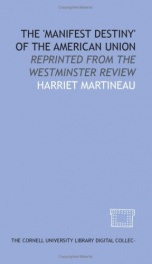
the manifest destiny of the american union
Series:
Unknown
Year:
Unknown
Raiting:
5/5
This volume is produced from digital images from the Cornell University Library Samuel J. May Anti-Slavery Collection
Show more
add to favoritesadd In favorites
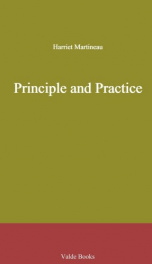
Principle and Practice
Series:
Unknown
Year:
Unknown
Raiting:
3/5
Harriet Martineau (1802-1876) was an English writer and philosopher, renowned in her day as a controversial journalist, political economist, abolitionist and life-long feminist. In 1821 she began to write anonymously for the Monthly Repository, a Unitarian periodical, and in 1823 she published Devotional Exercises and Addresses, Prayers and Hymns. She had to earn her living, and, being precluded by deafness from teaching, took up authorship in earnest. Besides reviewing for the Repository she wrote stories (afterwards collected as Traditions of Palestine), gained in one year (1830) three essay-prizes of the Unitarian Association, and eked out her income by needlework. In 1831 she was seeking a publisher for a series of tales designed as Illustrations of Political Economy. Her other works include Principle and Practice (1827), My Servant Rachel (1838), How to Observe (1838), Deerbrook (1839), The Settlers at Home (1841), The Martyr Age of the United States (1839), The Peasant and the Prince (1841), Feats on the Fiord (1841), The Crofton Boys (1841), and The Billow and the Rock (1846). --This text refers to an alternate Paperback edition.
Show more
add to favoritesadd In favorites
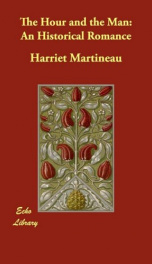
The Hour and the Man, An Historical Romance
Series:
Unknown
Year:
Unknown
Raiting:
1.5/5
The second novel, which calls itself “a historical romance, from Harriet Martineau, an English essayist, novelist, and economic and historical writer. Having been was one of the most widely admired authors of her day, she was also a pioneering feminist and social theorist who earned her own financial independence by journalism and writing. Based on the life of the slave leader, Toussaint L'Ouverture, “The Hour and the Man” was published in 1840.
Show more
add to favoritesadd In favorites
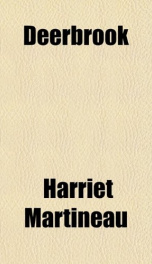
Deerbrook
Series:
Unknown
Year:
Unknown
Raiting:
4/5
In this novel it goes about five young people (a female governess, a doctor, a law student, and two young middle class ladies) and their intricate love affairs. The persecution of four of the five by the novel's villain has dramatic and extreme consequences. Three of the five characters are suicidally depressed for a rather big part of the book. But always in every chapter there is some social satire or some comic turn that balances out the character's melancholy. The children in the novel are particularly realistic and add lots of humor to the book. The true obstacle caused by the villain's persecution (as well as by genuine social ills) makes the characters to overcome their depressions and become better people. Their choice to choose love and honesty is celebrated and ultimately rewarded in this tale of village life. Martineau periodically inserts mini-essays of a paragraph or two on various issues ranging from what activities drive away depression to the impact of near-death experiences that are nice little pieces.
Show more
add to favoritesadd In favorites
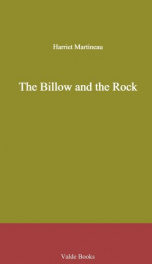
The Billow and the Rock
Series:
Unknown
Year:
Unknown
Raiting:
2.5/5
Illustrated by E.J. Wheeler --This text refers to an alternate Paperback edition.
Show more
add to favoritesadd In favorites

The Peasant and the Prince
Series:
Unknown
Year:
Unknown
Raiting:
4.5/5
Purchase of this book includes free trial access to www.million-books.com where you can read more than a million books for free. This is an OCR edition with typos. Excerpt from book: CHAPTER XI. WHAT BEFELL WHILE THE QUEEN WAS HOPING. secret cipher letters went now faster than ever, and -- seem to have been so urgent about speedy help and rescue as to have appeared somewhat peevish to friends at a distance. The Queen's sister wrote from Brussels that she hoped the royal family did not doubt the anxiety of their friends : that the danger appeared indeed as pressing as it could be represented ; but that some prudence was necessary on the part of those who were preparing help, and some patience on the part of those who were awaiting it. Alas! it was difficult for the poor Queen to be patient, expecting, as she did daily, the murder of the King. Though this fear seems to have been unfounded, it caused her as much suffering as if it had been just. She had a breastplate made for the King, of silk many times folded, and well wadded, so that it would resist the blow of a dagger, and even a pistol-ball. This under-dress was made at Madame Campan's house ; and she brought it into the palace, wearing it as an under-petticoat, that no one might see it. For three days, in the beginning of July, did Madame Campan wear this heavy warm petticoat before an opportunity could be found for the King to try it on. The occasion for which it was wanted was the 14th of July, the anniversary of the destruction of the Bastille, and the date of the Independence of the Nation, as the nation chose to say ; on which day the King was to appear in public. When he tried on the breastplate, he said in a low voice to Madame Campan, that he wore this to satisfy the Queen, but that he was persuaded he should not be assassinated, but left to be disposed of in another way. The Queen afterwards made Madame Campan repeat to her what the King had said, and then observed that this was not new t... --This text refers to an alternate Paperback edition.
Show more
add to favoritesadd In favorites

The Crofton Boys
Series:
Unknown
Year:
Unknown
Raiting:
3.5/5
Purchase of this book includes free trial access to www.million-books.com where you can read more than a million books for free. This is an OCR edition with typos. Excerpt from book: CHAPTER XI. DOMESTIC MANNERS. After Mr. Proctor had come and was gone, and Mrs. Proctor was gone with him, Hugh began to wonder why Tooke had never paid the visit he had promised. Several boys had called; some to thank Hugh for balls that he had quilted; some to see how he got on; and some to bring him Crofton news. Mr. Tooke had fastened his horse up at the door, in passing, and stepped in for a few minutes, two or three times a week; but it was now within six days of the holidays, and the one Hugh most wished to see had not appeared. His uncle observed his wistful look when the door-bell rang, and drew his conclusions. He said, on the Wednesday before the break- ing-up, that he was going to drive past the Crofton school; that it was such a fine day that he thought Hugh might go with him, and perhaps they might persuade some one to come home to dinner with them. Hugh had never enjoyed the open air more than during this drive. He had yet much to learn about the country, and it was all as beautiful as it was new. Mr. Shaw could not stop for Hugh to get out at Crofton; so, when his arrival was seen, the boys were allowed to go out of bounds, as far as the gig, to speak to their schoolfellow. Mr. Shaw asked Tooke to mount, and go home with them for the day. When he had jumped in, and Hugh had bidden the rest good-by, asudden shyness came over his poor conscious visitor; and it was not lessened by Mr. Shaw telling Tooke that he did not do credit to Crofton air, so puny as he seemed; and that he looked at that moment more like one that had had a bad accident than Hugh did. Hugh was full of questions about Crofton matters, however; and long before they reached Mr. Shaw's they were chattering as busily as possible. But then it was all spoiled to Tooke again by seeing Hug... --This text refers to an alternate Paperback edition.
Show more
add to favoritesadd In favorites
What readers are saying
What do you think? Write your own comment on this author!
write a commentGenre
- Health, Mind & Body / Relationships / Interpersonal Relations
- Literature & Fiction / Literary
- Books / Children's Books / History & Historical Fiction
- Books / Biographical fiction
- Books / Brittany (France)
- Literature & Fiction / Classics
- Law / United States
- Nonfiction / Education / Education Theory / History
- Science / Juvenile literature
if you like Martineau Harriet try:
readers also enjoyed
What readers are saying
What do you think? Write your own comment on this author!
write a commentGenre
- Health, Mind & Body / Relationships / Interpersonal Relations
- Literature & Fiction / Literary
- Books / Children's Books / History & Historical Fiction
- Books / Biographical fiction
- Books / Brittany (France)
- Literature & Fiction / Classics
- Law / United States
- Nonfiction / Education / Education Theory / History
- Science / Juvenile literature
if you like Martineau Harriet try:
readers also enjoyed
Do you want to read a book that interests you? It’s EASY!
Create an account and send a request for reading to other users on the Webpage of the book!

